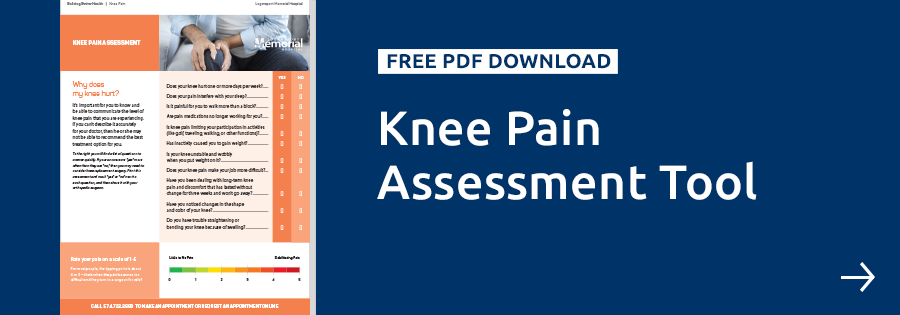This article is part of the Ultimate Guide to Knee Replacement from Logansport Memorial Hospital.
Back in 1687, Sir Isaac Newton proposed the law of inertia: “A body at rest tends to remain at rest. A body in motion tends to stay in motion.”
Though Newton was talking about physics, his explanation also applies to how the human body works. As you age, the secret to keeping moving is to keep moving. In your body, it’s the joints that help make everyday movements—big and small—possible. Joints are the fibrous connective tissues that hold your bones together.

For long-lasting function, doctors recommend making moderate heart-healthy exercise part of a routine to stay limber, counteract fatigue, maintain bone health, and strengthen your joints.
Stretching
Start your fitness program with at least 10 minutes of simple-yet-dynamic stretches to loosen tight joints, improve flexibility, and increase range of motion.
Basic, gentle stretches (such as side bends, hip rolls, and hamstring stretches) are crucial for boosting circulation and reducing pressure on joints.
Weight training
Add strength exercises (such as lifting weights or doing resistance training) to your exercise program three times a week to manage arthritis pain, improve balance and posture, and control joint swelling and stiffness.
Tips for working out without getting hurtAerobic exercise
To improve your joint health, focus on including some safe cardio exercise into your regimen.
Start slowly and work up to doing 30 or 60 minutes of low-impact activities that can help you build muscle tone, control your weight, and improve your stamina, such as:
- yoga
- walking
- swimming
- tai chi
- cycling
Take it easy and only increase the intensity of your aerobic exercise once your endurance improves.
Avoid getting your heart pumping with forms of high-impact exercise, like running, as well as popular training programs, such as CrossFit and P90X, because they can cause excessive stress on joints and some make pain symptoms worse, especially if you are carrying a few extra pounds.
Why staying active is good for everyone
In almost all cases, there is little downside to exercising, even if you’re tired and your joints ache. Some patients who have debilitating joint pain see only a downside in exercising, and they occasionally will limit any extra motion to avoid potential feelings of discomfort.
Unfortunately, this inactivity ends up being an excuse to avoid exercise that causes more harm than good. Decreased activity causes more disability as a result of reduced muscle and joint strength.
Even if you’re in a wheelchair, make an effort to get in some expert-recommended regular movement into your everyday life to improve your overall joint health and help keep your body functioning as you want it to—when you want it to—so you can live your life to the fullest.

Consult your physician
The benefits of regular workouts when it comes to maintaining healthy joints are clear, but you need to build up your fitness slowly. Before you embark on any new fitness plan, experts always recommend speaking to your primary care provider.
They can make recommendations to help you reduce the risk of injury, maximize benefits, and get the results you want (especially if you have any pre-existing medical conditions or if it has been a while since you’ve gotten regular exercise).
Explore our orthopedic services
You might also like:



